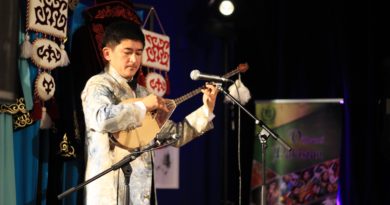From Watermael to Boisfort
The Watermael train station building stands solid against the late-summer sky, a fine work of construction, white and reddish bricks in a sequence of ordered lines, today an uncomplaining witness to the heat of the early afternoon. In the backyard, a young couple wearing sunglasses and elegant clothes holds champagne flutes and chats. They sip, they glance at each passerby as if studying their shoes, the fabrics of their clothes. The sound of cutlery against plates, the clinking of glasses can be heard coming from the inside of the building.
“There’s a wedding reception going on now,” says Alain, our guide from Bruxelles Bavard. “The building, which dates from 1860, is owned by the Municipality. A lot of people like to get married in August.”
A group of twenty people listens with attention as he explains how the station used to look in the XIX century. To the right, where a parking lot exists now, merchants would come and set up their stalls to sell coal. On the opposite side of the street, a building was used as a storage room for beer. The name of the tour is De Watermael à Boisfort une randonnée par monts et vaux, and we’ll be walking about 10 km. with different stops along the way, all in four hours.
Alain explains that one of the main reasons for building the train station was to give people a way to come here from the city. “People living Brussels built here what we call Maisons de Campagne. They would get off the train and walk to their country houses.”
We take Dreve de Weigelias, a quiet dead-end street where the Congo Basin Art History Research Center can be found. Alain explains that the word dreve, though commonly used by French-speaking Belgians, comes from the Dutch word dreef. “The correct word to use is Allée.” We then stop to look at the Sgraffiti details on some of the facades, high up, just below the cornices. “First you put a dark layer of plaster, let it dry, then add a second layer of light plaster and cut the details in, then you paint. That’s what the word sgraffire means. To carve or scratch.”
As the group marches down the street, a woman standing in a doorway looks at us with a furrowed brow, as if trying to recognize a face, someone familiar. She’s holding back a young, black Labrador by the collar; its tail wags and hits the door, the coats hanging on the wall by the entrance. “Are you taking a guided tour here?” the woman asks. Behind her, a few steps up and further into the house, the silhouette of a little girl waves at us.
We then take Rue Louis Ernotte and Alain points out that on one side of the street it’s Watermael, on the other Ixelles or Elsene. Then he explains something that comes as a revelation to many. “The word Elsene in Dutch means aulnes in French. Since there were so many of those trees in the area, that’s where the Municipality took its name from.”
On 34A Avenue des Campanules we stop to look at the house where Paul Delvaux lived and worked. “It might not be true, I don’t know, but some say that people would ask if they could rent the house across from Delvaux’s,” Alain says. “Especially the second floor because from there you could see the models Delvaux used to paint. Naked, most of them.”
At the end of Rue Grates we find the Cultural Center Paul Delvaux, which is closed today, but through the window we get to see some of the details of Delvaux’s painting on the wall, a depiction of the neighborhood seen by the artist. At Keym Square we stop for an ice cream before making our way to a roundabout called Trois Tilleuls, Three Linden, which is situated at the top of a hill. Alain explains that on one of its sides, where the Watermaelbeek or Watermael creek runs, the area known as Watermael extends, which is the one we’ve just left behind. On the other side, where the Woluwe river meanders, the area of Boisfort begins.
In the 1920’s, two large housing projects called Cités Jardins were built in this area, the Cité Floreal and Cité Logis. The Cité Floreal constructions are painted in yellow and black, streets with the names of flowers, while the Logis ones are painted in black and green, streets with the names of animals. The main idea was to have plenty of green space for each family. “The tram 33 used to pass through here,” Alain says. “Yes, the famous tram 33 that Jacques Brel used to sing to.”
We walk through a section of the Cité Floreal, all of the houses with neatly trimmed lawns and guillotine-like windows, their frames painted in vivid green, but some of the constructions show mild signs of decay. At the margins of the Cité we find some apple trees, its branches swaying in the breeze, and I pick an apple, its shape slightly irregular, but in my mouth each bite is sweet and tart. The right balance.
The Maison Communale of Watermael-Boisfort stands surrounded by three squares: Wiener, Gilson and Payfa. A few steps away from the Maison Communale, we find La Venerie, or the house where everything related to practice of hunting was organized. The Grand Veneur, or Master of the Hunt, lived there. It was from the courtyard that he would direct the start of the chase.
The tour reaches an end at a sculpture by the Mechelen-born painter and sculptor, Rik Wouters, who came to live also in this municipality. “She was his most usual model,” Alain says. “Her name was Nel Deurinckx, and she later became the painter’s wife.”



